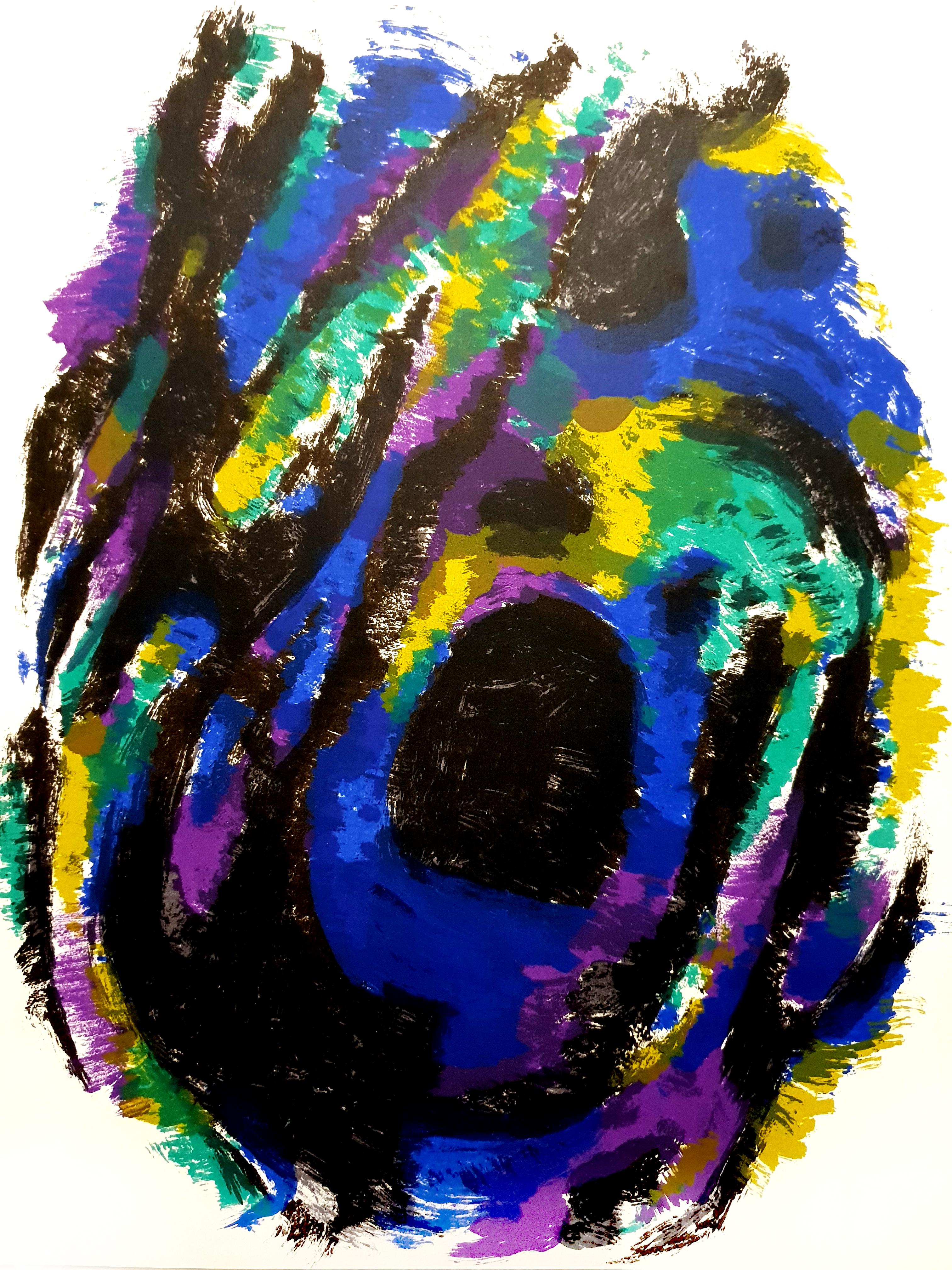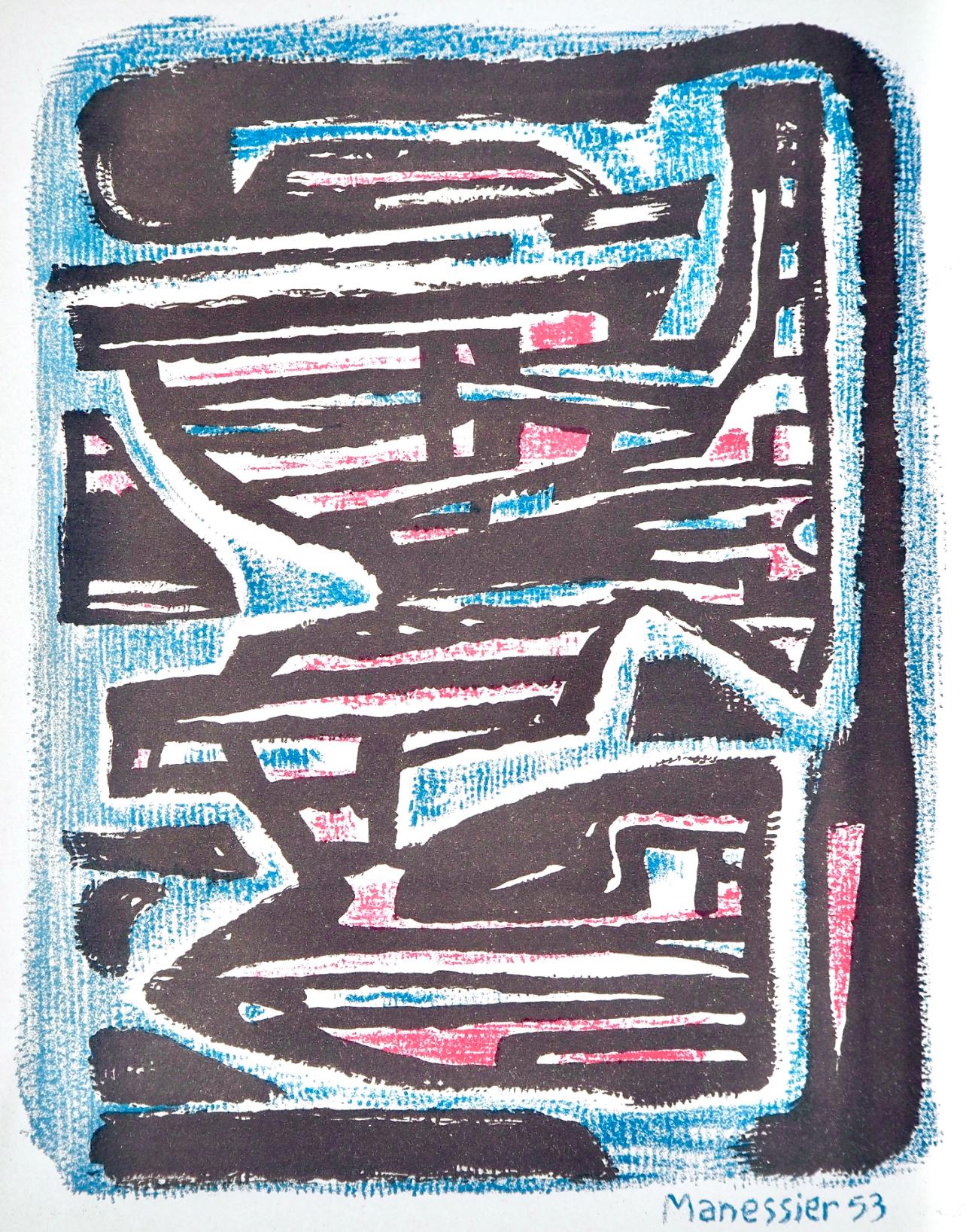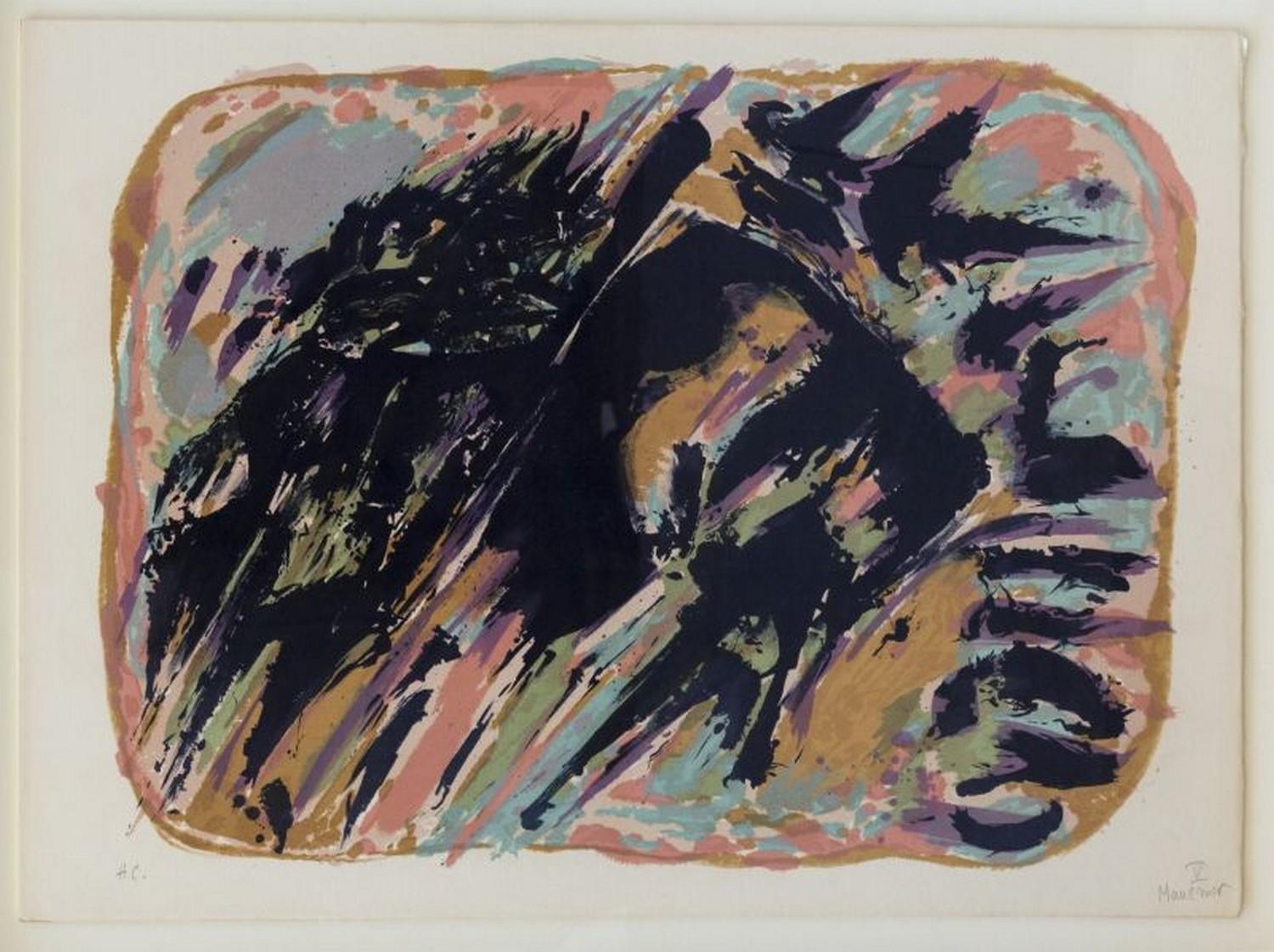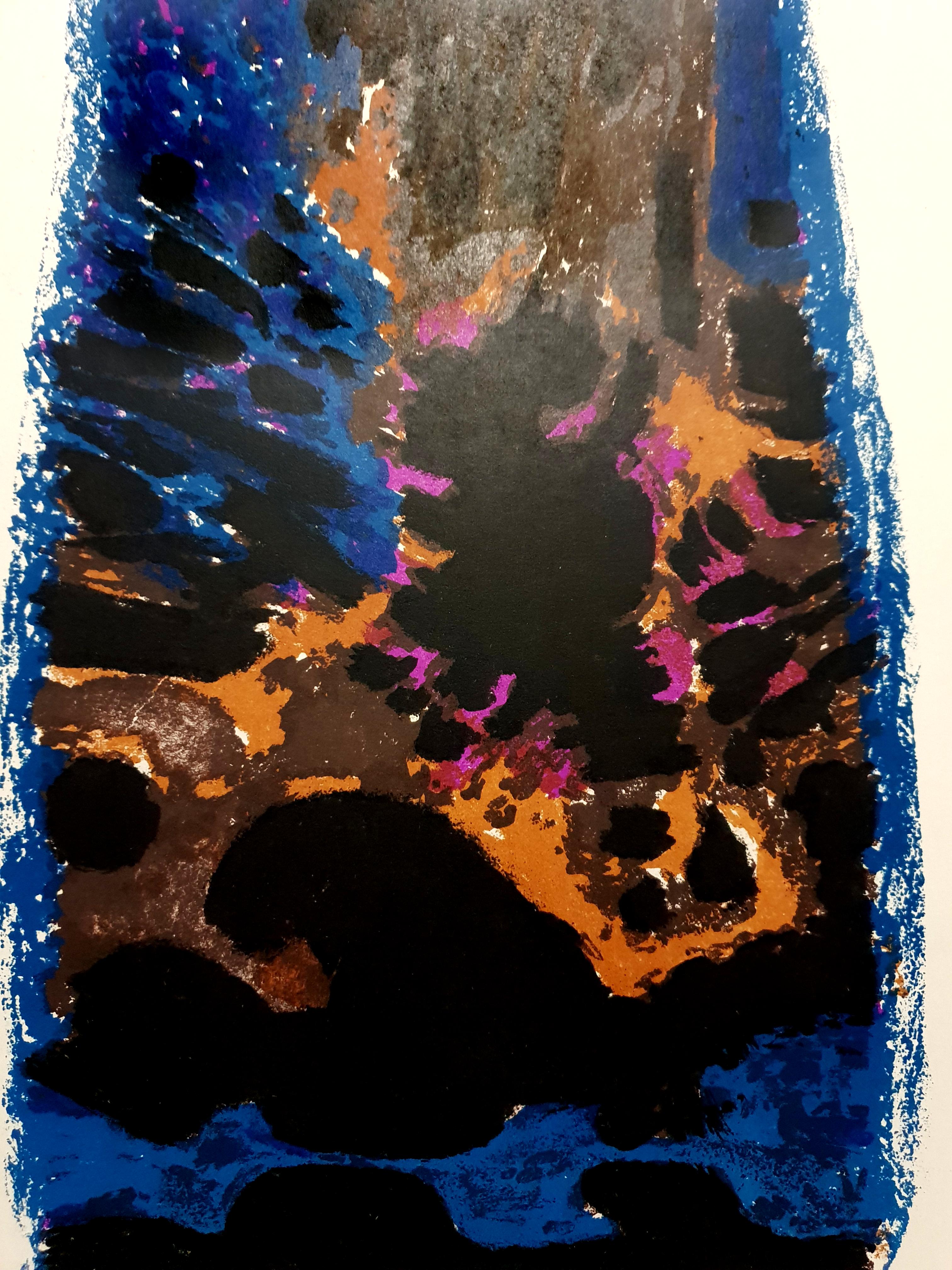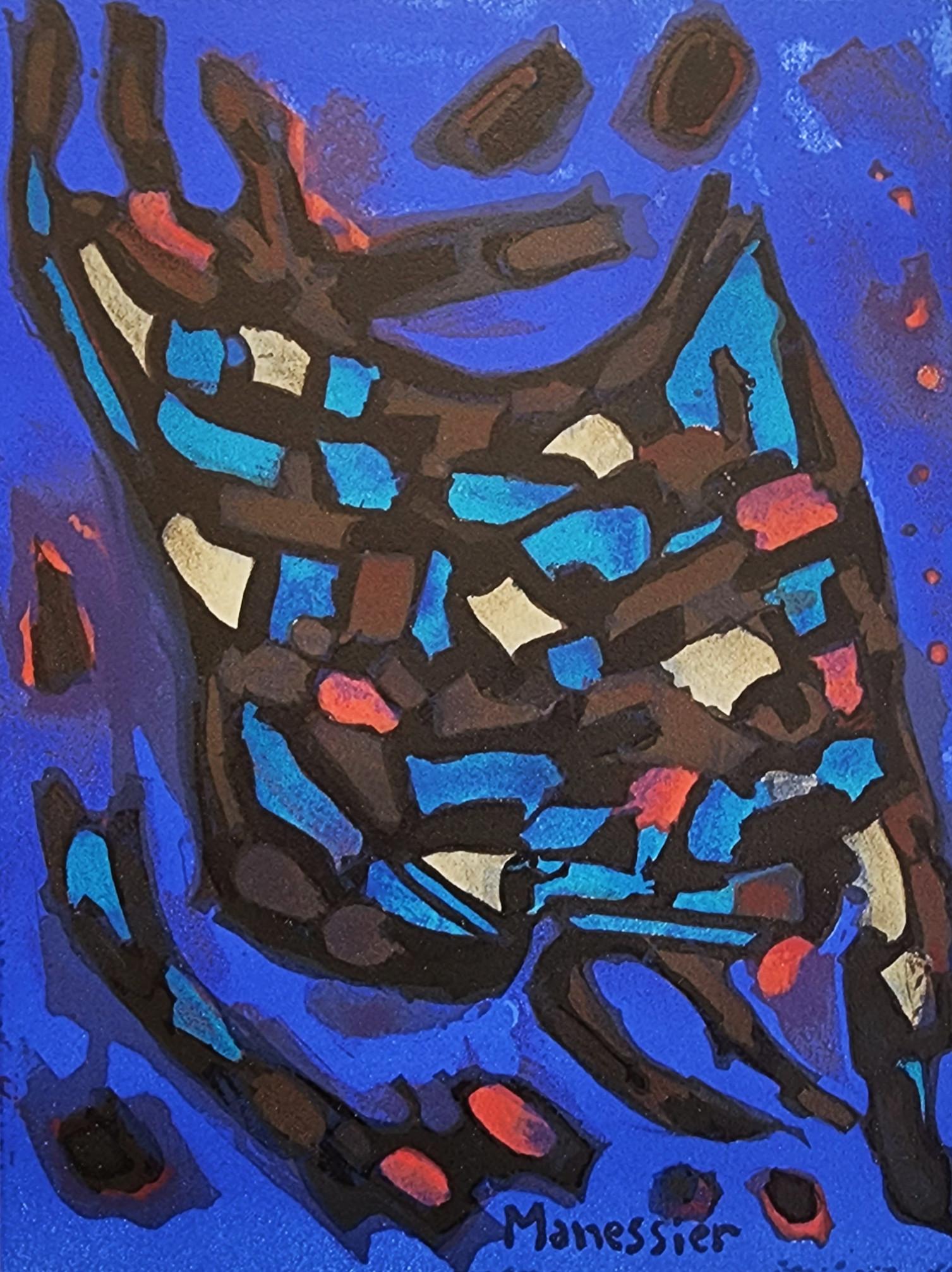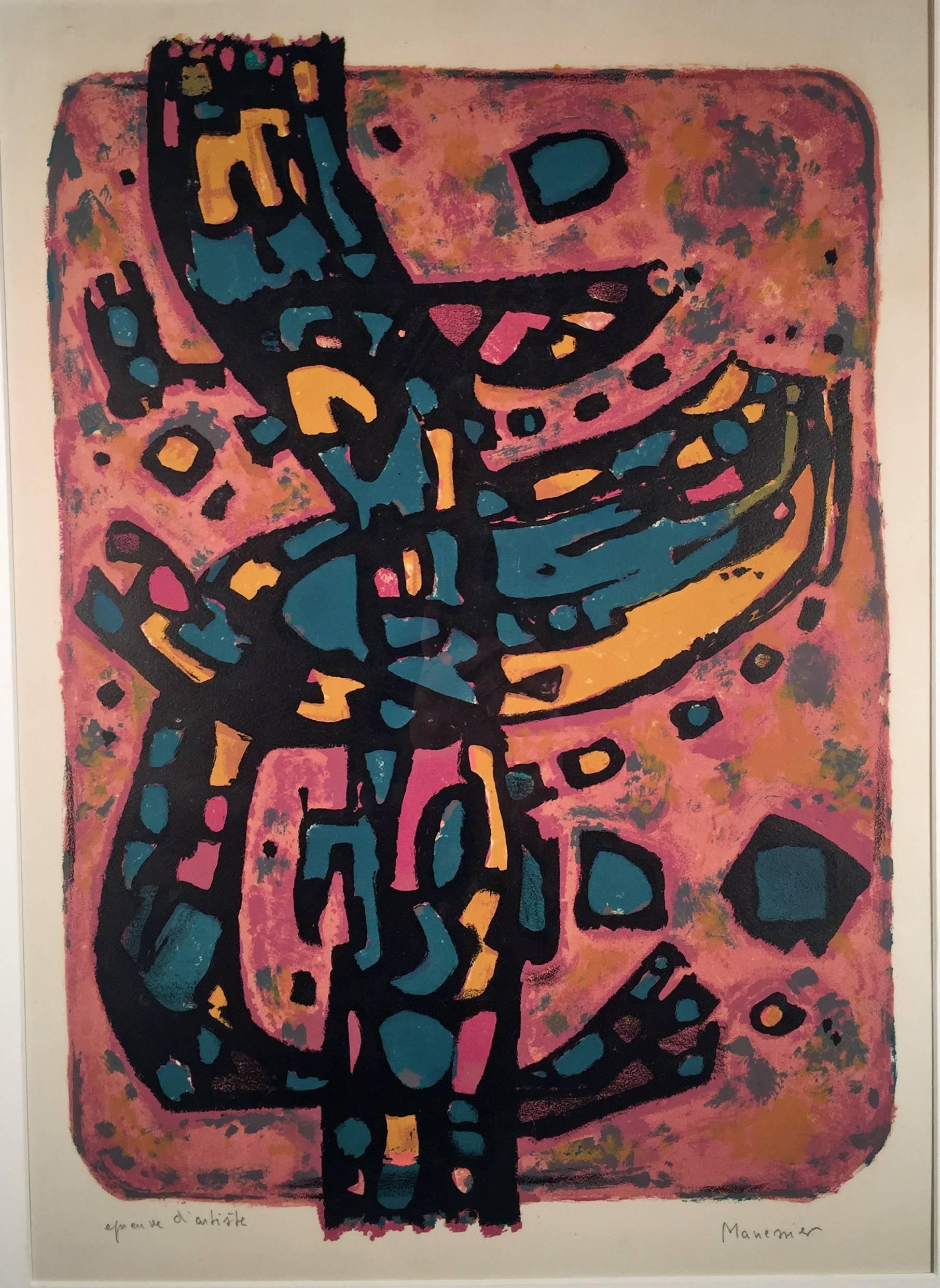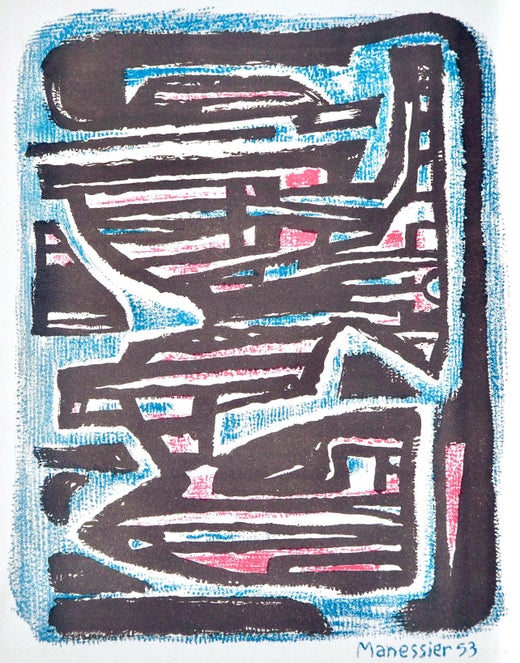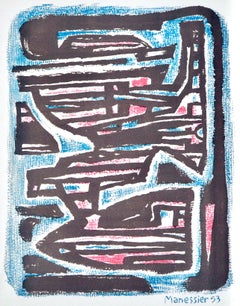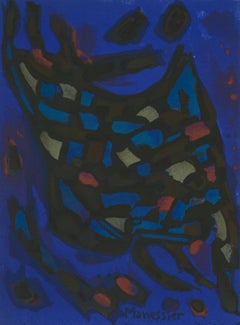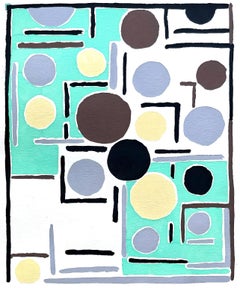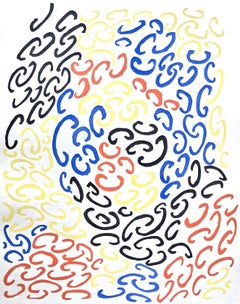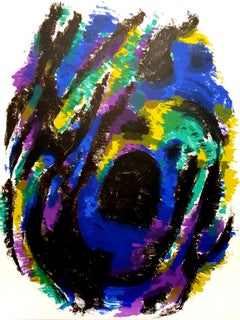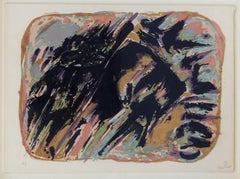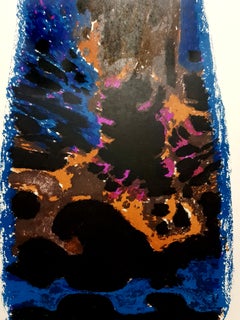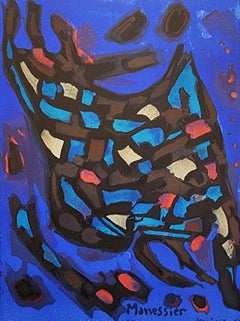Artículos similares a Le Nid, Petite tache noire n°1, Société internationale d'art XXe siècle
¿Quieres más imágenes o vídeos?
Solicita imágenes o vídeos adicionales al vendedor
1 de 7
Alfred ManessierLe Nid, Petite tache noire n°1, Société internationale d'art XXe siècle1960
1960
619,05 €
773,81 €Descuento del 20 %
Acerca del artículo
Litografía sobre papel vélin. Tamaño del papel: 12,4 x 9,65 pulgadas. Inscripción: Sin firmar y sin numerar, tal como se emitió. Notas: Del álbum, XXe siècle, Nouvelle série, XXIIe Année, N° 15, Noël 1960, Cahiers d'Art publiés sous la direction de Gualtieri di San Lazzaro, 1960. Publicado por la Société Internationale d'Art XXe siècle, París, bajo la dirección de Gualtieri di San Lazzaro, éditeur, París; impreso por Mourlot Frères, París, 1960. Notas adicionales: Extraído del artículo académico "Promoting Original Prints, The Role of Gualtieri di San Lazzaro and XXe Siècle" de Valerie Holman, publicado en Print Quarterly, XXXIII, 2016, 2, Hasta hace poco se había escrito muy poco sobre el autor y editor de arte italiano Gualtieri di San Lazzaro (1904-75), sin embargo, durante 50 años hizo la crónica de la vida y obra de artistas contemporáneos, produjo monografías de calidad excepcional y difundió grabados originales de pintores y escultores modernos a través de su publicación periódica más conocida, XXe Siècle. Aunque sigue siendo una figura relativamente desconocida en el Reino Unido, San Lazzaro es uno de la media docena de grandes editores de arte de mediados del siglo XX que, junto con su modelo, Ambroise Vollard (1866-1939), y los de su propia generación, Christian Zervos (1889-1970), Tériade (1889-1983) y Albert Skira (1904-73), eligió París como sede, considerándola durante toda su vida el centro del mundo del arte.....XXe Siècle, una publicación periódica ilustrada, se lanzó en 1938 y se imprimió en ediciones de aproximadamente 2.000 ejemplares, cada uno de los cuales contenía tanto fotografías como reproducciones separadas en cuatricromía de un amplio espectro de imágenes visuales que abarcaban desde obras maestras de la pintura occidental hasta grabados populares del Lejano Oriente. Su gran formato, su diseño vivo y la estrecha integración de texto e imagen llamaron inmediatamente la atención, pero su característica más innovadora, introducida a sugerencia de Hans Arp (1886-1966), fue la inclusión de grabados originales de artistas contemporáneos en cada número. Con un atractivo evidente para los coleccionistas, XXe Siècle también se diseñó para dar a conocer la pintura y la escultura contemporáneas a un público internacional más amplio, mediante reproducciones en color de buena calidad y la inmediatez de las impresiones originales. Comparables en precio a los Cahiers d'Art, los primeros números de XXe Siècle se agotaron rápidamente. Aunque las preferencias estéticas del propio San Lazzaro se inclinaban hacia la abstracción lírica, dejó claro que XXe Siècle no era partidista [la publicación cesó durante la II Guerra Mundial]..... En 1951, San Lazzaro relanzó XXe Siècle con números temáticos basados en materiales o centrados en un tema de interés actual en las artes visuales, especialmente en Europa: conceptos de espacio, materia, monocromía, marcaje y signo". Un rasgo definitorio de la nueva serie era el diálogo artístico de Italia con Francia, ya que, si bien San Laz-zaro se había centrado en un principio en pintores y escultores afincados en París, su objetivo era crear una red internacional, dar a conocer la obra de artistas franceses en Italia y de artistas italianos en Francia, y ampliar posteriormente este eje bilateral al mundo anglófono. Todos los artistas representados en el nº I mediante un grabado original eran conocidos sobre todo como escultores: Arp, Laurens, Henry Moore (1898-186) y Marino Marini, San Lazzaro no sólo pretendía mostrar a los lectores toda la gama de obras de un artista, sino fomentar la producción de grabados, un estímulo muy apreciado, por ejemplo, por Magnelli..... Aquejado de problemas de salud, en 1968 San Lazzaro perdió el control general de XXe Siècle en favor de Léon Amiel, un impresor-editor que le había proporcionado apoyo financiero y le había ayudado con la distribución en América". Los números temáticos cesaron y fueron sustituidos por un "panorama" del año, pero San Lazzaro seguía activo como editor de libros y álbumes de grabados.... Poco después de su muerte, el propio San Lazzaro fue objeto de dos exposiciones: Omaggio a XXe Siècle", celebrada en Milán en diciembre de 1974, se centró en la obra gráfica de los artistas más cercanos a él al final de su vida, mientras que "San Laz-zaro et ses Amis", celebrada en el Musée d'Art Moderne de la Ville de París en 1975, presentó obras de todos aquellos cuya obra había promovido durante más de 50 años: Arp, Calder (1898-1976), Capogrossi, Chagall, Sonia Delau-nay, Dubuffet, Estève, Lucio Fontana (1899-1968), Gili-oli (1911-77), Magnelli, Marini, Miró, Moore y Poliakoff. Esta exposición fue considerada por uno de sus colegas más cercanos como un retrato indirecto de San Lazzaro, un hombre complejo cuya modestia y reserva enmascaraban su incansable afán por extender la apreciación internacional del arte contemporáneo y acercar al público lector a su creación a través del medio impreso.
ALFRED MANESSIER (1911-1993) fue un pintor, vitralista y diseñador de tapices francés no figurativo, que formó parte de la nueva Escuela de París y del Salón de Mai. Inspirándose en el entorno natural de su región natal, Manessier empezó a pintar paisajes a una edad temprana. Para su educación formal, estudió arquitectura, primero en Amiens y luego como estudiante de arquitectura en la École des beaux-arts de París, en 1929. A Manessier no le gustaba el ambiente formal de la escuela y prefería copiar cuadros del Louvre -sobre todo los de maestros antiguos como Rembrandt van Rijn, Peter Paul Rubens y Tintoretto- y frecuentar los talleres de Montparnasse. También estudió brevemente en 1935 en la Academia Ranson con Roger Bissière, que introdujo a Manessier en la técnica del fresco, y hasta la Segunda Guerra Mundial, sus cuadros empezaron a reflejar influencias cubistas y surrealistas. En 1939, Manessier fue llamado a filas.
En la posguerra, Manessier se asoció a la Abstracción lírica (Abstraction lyrique) y al Arte Informal. Sin embargo, su obra también se adhirió a una corriente más específica del arte francés que apareció durante la ocupación alemana e incorporó temas y simbolismo cristianos a composiciones semiabstractas. El pintor católico Jean Bazaine, firme defensor del art sacré (arte sacro), incluyó la obra de Manessier en la famosa exposición Vingt jeunes peintres de tradition française (Veinte jóvenes pintores de tradición francesa, 1941) organizada en la Galería Braun de París, en desafío a los nazis. En 1943, Manessier experimentó un despertar religioso durante un retiro de tres días en un monasterio trapense. Poco después se convirtió al catolicismo romano y comenzó a llevar un estilo de vida cada vez más ascético. En 1945 sus composiciones empezaron a recordar a las vidrieras y se volvieron más abstractas, aunque siguieron apareciendo elementos figurativos relacionados con la religión y el paisaje. Sus cuadros aluden a significados religiosos a través de sus títulos y mediante combinaciones de símbolos perceptibles e imágenes abstractas.
Aunque Manessier obtuvo inicialmente reconocimiento internacional por sus pinturas, dominaba diversos medios, incluida la litografía, así como diseños para tapices, objetos litúrgicos y ornamentos. A instancias de Georges Rouault, Manessier empezó a trabajar en vidrieras en 1948 y realizó numerosas obras para iglesias de Francia, Alemania, España y Suiza. A partir de 1956, el simbolismo religioso y los temas políticos coexisten en una serie de obras que responden a diversos acontecimientos políticos, como la crisis de Suez, la invasión de Hungría y el asesinato de Martin Luther King Jr. En la década de 1960, Manessier realizó varios viajes a España, donde se vio influido por las obras de El Greco y Francisco De Goya, así como a Canadá, los Países Bajos y el sur de Francia, donde los paisajes naturales -un tema persistente en toda su obra- influyeron en el contenido y el estilo de su obra de entonces. En 2007, el cuadro de Alfred MANESSIER, Turris Davidica, se vendió por 593.217 USD en la Cornette de Saint Cyr de París, estableciendo un récord mundial para el artista.
- Creador:Alfred Manessier (1911 - 1993, Francés)
- Año de creación:1960
- Dimensiones:Altura: 31,5 cm (12,4 in)Anchura: 24,52 cm (9,65 in)
- Medio:
- Movimiento y estilo:
- Época:
- Estado:
- Ubicación de la galería:Southampton, NY
- Número de referencia:1stDibs: LU1465216495532
Alfred Manessier
Alfred MANESSIER nació el 5 de diciembre de 1911 en Saint-Ouen, Somme. Formado en la Escuela de Bellas Artes de Amiens (1924 - 1929), completó su formación en la Escuela de Bellas Artes de París y pasó un breve periodo en el taller del pintor Roger Bissière, que le inició en el fresco y con el que se refugió en Boissiérettes, en el Lot, al principio de la guerra. A partir de 1947, las vidrieras ocuparon gran parte de su obra, basada ahora en la abstracción. Realizó una veintena de proyectos en Francia, entre ellos las vidrieras de la iglesia de Saint-Michel des Bréseux (Doubs), su primer encargo (1948 - 1950), las de la iglesia de Saint-Pierre de Trinquetaille en Arles (1953) y las de la capilla de Sainte-Thérèse de l'Enfant Jésus et de la Sainte Face en Hem (Nord - 1957). Las vidrieras de la Iglesia del Santo Sepulcro de Abbeville, uno de sus últimos encargos realizado entre 1982 y 1993, se consideran su obra maestra. También ejecutó una docena de proyectos de vidrieras en Suiza, Alemania y España. Como pintor abstracto de la Escuela de París, Manessier abordó con frecuencia temas relacionados con la religión católica. Sus cuadros se inspiran a menudo en los paisajes del norte de Francia, pero también en sus viajes. A partir de 1956, realizó un gran número de pinturas políticas tituladas "Hommage", que se hacían eco de la violencia en el mundo. La difusión de sus obras en el espacio público a través de estas vidrieras le dio gran notoriedad en vida, y sus cuadros fueron galardonados con numerosos premios internacionales (como el Gran Premio de la Bienal de Venecia, que recibió en 1962, junto a Albert Giacometti, que recibió el Gran Premio de escultura). Murió el 1 de agosto de 1993 a consecuencia de un accidente de coche, poco después de terminar las vidrieras de Abbeville.
Sobre el vendedor
4,9
Vendedor Platino
Vendedores premium con una calificación de +4,7 y tiempos de respuesta de 24 horas
Establecido en 1978
Vendedor de 1stDibs desde 2021
1189 ventas en 1stDibs
Tiempo de respuesta usual: <1 hora
- EnvíoRecuperando presupuesto…Envío desde: Southampton, NY
- Política de devolución
Partes de esta página se han traducido automáticamente. 1stDibs no puede garantizar la exactitud de las traducciones. El inglés es el idioma predeterminado de este sitio web.
Garantía de autenticidad
En el improbable caso de que haya algún problema con la autenticidad de un artículo, ponte en contacto con nosotros en un plazo de 1 año para recibir un reembolso total. DetallesGarantía de devolución de dinero
Si tu artículo no es como se describe, sufre daños durante el transporte o no llega, ponte en contacto con nosotros en un plazo de 7 días para recibir un reembolso total. DetallesCancelación dentro de las 24 horas
Tienes un período de gracia de 24 horas para reconsiderar tu compra, sin preguntas.Vendedores profesionales aprobados
Nuestros vendedores de primera clase deben cumplir estrictos estándares de servicio para mantener la integridad de nuestros anuncios.Garantía de igualación de precios
Si encuentras que un vendedor publicó el mismo artículo por un precio menor en otro lado, igualaremos ese precio.Entrega global de confianza
Nuestra red de transporte de primera ofrece opciones de envío especializado en todo el mundo, que incluye envío personalizado.Más de este vendedor
Ver todoComposición, Société internationale d'art XXe siècle
Por Alfred Manessier
Litografía sobre papel vélin. Tamaño del papel: 12,4 x 9,65 pulgadas. Inscripción: Firmada en la plancha y sin numerar, tal como se emitió. Notas: Del álbum, XXe siècle, Nouvelle sér...
Categoría
Década de 1950, Moderno, Impresiones abstractas
Materiales
Litografía
688 € Precio de venta
Descuento del 20 %
Envío gratuito
Manessier, Composición, Grabados de la imprenta Mourlot (después)
Por Alfred Manessier
Litografía sobre papel vélin d'Arches. Sin firmar y sin numerar, tal como se publicó. Buen estado. Notas: Del álbum Impresiones de la imprenta Mourlot, 1964. Publicado por Fernand M...
Categoría
Década de 1960, Moderno, Impresiones abstractas
Materiales
Litografía
619 € Precio de venta
Descuento del 40 %
Envío gratuito
Delaunay, Plancha nº 15, Composiciones, colores, ideas: Sonia Delaunay (after)
Por Sonia Delaunay
Plantilla de color con tintas gouache densas sobre papel tejido. Sin firmar y sin numerar, con encabezamiento impreso diseñado por Delaunay, arriba a la izquierda, tal como se public...
Categoría
Década de 1930, Moderno, Impresiones abstractas
Materiales
Estarcido
1241 € Precio de venta
Descuento del 20 %
Envío gratuito
Delaunay, Plancha nº 10, Composiciones, colores, ideas: Sonia Delaunay (after)
Por Sonia Delaunay
Plantilla de color con tintas gouache densas sobre papel tejido. Sin firmar y sin numerar, con encabezamiento impreso diseñado por Delaunay, arriba a la izquierda, tal como se public...
Categoría
Década de 1930, Moderno, Impresiones abstractas
Materiales
Estarcido
1241 € Precio de venta
Descuento del 20 %
Envío gratuito
Composición 66 (Abadie 66), Sociedad Internacional de Arte del Siglo XX
Por Alberto Magnelli
Linograbado sobre papel vélin. Tamaño del papel: 12,4 x 9,65 pulgadas. Inscripción: Sin firmar y sin numerar, tal como se emitió. Referencias del catálogo razonado: Alberto Magnelli ...
Categoría
Década de 1930, Moderno, Impresiones abstractas
Materiales
Linograbado
619 € Precio de venta
Descuento del 20 %
Envío gratuito
Delaunay, Plancha nº 33, Composiciones, colores, ideas: Sonia Delaunay (after)
Por Sonia Delaunay
Plantilla de color con tintas gouache densas sobre papel tejido. Sin firmar y sin numerar, con encabezamiento impreso diseñado por Delaunay, arriba a la izquierda, tal como se public...
Categoría
Década de 1930, Moderno, Impresiones abstractas
Materiales
Estarcido
1241 € Precio de venta
Descuento del 20 %
Envío gratuito
También te puede gustar
Alfred MANESSIER - Litografía original
Por Alfred Manessier
Alfred MANESSIER - Litografía original
Abstracción colorista
1962
Desde el siglo XX
Dimensiones: 32 x 24
Edición: G. di San Lazzaro.
Sin firmar y sin numerar tal como se emitió
Categoría
Década de 1960, Moderno, Impresiones figurativas
Materiales
Litografía
Composición abstracta
Por Alfred Manessier
Litografía, 1975
Edición : V/XV
56,00 cm. x 76,00 cm. 22,05 pulg. x 29,92 pulg. (papel)
50,00 cm. x 67,00 cm. 19,69 pulg. x 26,38 pulg. (imagen)
Litografía perteneciente a una seri...
Categoría
Década de 1970, Abstracto, Impresiones abstractas
Materiales
Litografía
Alfred MANESSIER - Litografía
Por Alfred Manessier
Alfred MANESSIER - Litografía
1962
De la revista de arte XXe Siecle (nº 20)
Dimensiones: 32 x 24
Edición: G. di San Lazzaro.
Sin firmar y sin numerar tal como se emitió
Categoría
Década de 1960, Moderno, Impresiones figurativas
Materiales
Litografía
Composición (Mourlot Paris)
Por Alfred Manessier
Alfred MANESSIER
Composición
1964
Litografía original en color sobre Velin d'Arches
Tamaño: 10x7,375 pulg.
Edición: 2,000
Firmado en la Piedra
Verso anotado
Editorial: Mourlot Paris
...
Categoría
Década de 1960, Moderno, Impresiones y múltiplos
Materiales
Vitela, Litografía
Precio a petición
FLAMME VIVE
Por Alfred Manessier
Manessier, Alfred. FLAMME VIVE. Litografía en colores, 1959. Prueba de artista, además de la edición de 175. Inscripción "Epreuve d'Artiste" y firma a lápiz. 20 x 13 1/2 pulgadas, 51...
Categoría
mediados del siglo XX, Abstracto, Impresiones abstractas
Materiales
Litografía
605 € Precio de venta
Descuento del 20 %
Laudes II
Por Alfred Manessier
Litografía, 1976
Firmado a lápiz por el artista
Prueba de artista
Impresora : Mourlot, Paris
65,50 cm. x 60,50 cm. 25,79 pulg. x 23,82 pulg. (papel)
57,00 cm. x 49,00 cm. 22,44 ...
Categoría
Década de 1970, Abstracto, Impresiones abstractas
Materiales
Litografía
